Black swans are the rare exceptions to the norm and defy conventional wisdom.
So why do I consider Sicily the “black swan” of bespoke tailoring, the last secret left for sartorialists?
To learn why, watch my new video below:
Black swans are the rare exceptions to the norm and defy conventional wisdom.
So why do I consider Sicily the “black swan” of bespoke tailoring, the last secret left for sartorialists?
To learn why, watch my new video below:
Ours is both a true bespoke process and product. Sicilian Reserve jackets are made to the workshop’s highest standard: individualized paper pattern, creation of a basted jacket, hand-padded canvas in chest, lapel and collar, hand-attached linings and pick-stitching. In addition, a fitting is included to make any fit adjustments to the basted jacket.
In preparation for your fitting appointment, the workshop creates a partially constructed or basted jacket that you try on as a basis for refining the fit of your jacket. The body of the jacket is exposed with the internal canvas of the chest, lapel and collar. The sleeves and shoulders are attached with basted stitching which means they can be removed and adjusted as the tailor refines the fit of the jacket.
Before the tailor travels to the fittings, the workshop creates a “fitting pack” for each client containing the basted jacket (and/or pants) and order form to document changes in the fitting process.

Then we set up the room we are meeting in and get ready for your arrival.
When we meet with you, the tailor and I will examine the shoulder, chest, waist and overall proportions of the jacket. The tailor will shorten, lengthen, let out or take in different parts of the jacket, all the while pinning and marking these changes on the basted jacket in real time. These fit adjustments are also subsequently reflected in your paper pattern back in the workshop.
The pants are a bit more straightforward. We take a look at the overall line and then examine the fit at key spots such as the waist, seat, thigh, leg and length.
During the fitting you will finalize your preferences for jacket length, sleeve length, shoulder line (padded v. nonpadded), shoulder extension, button point, jacket waist and trouser length. We typically have a discussion of these features at the time of the measurements and order taking but the fitting will enable you to make a final determination.
It is essential that you are comfortable with your choices and that you fully approve the changes made at the fitting. These choices are often not reversible (e.g. button stance/height).

One of the great strengths of Sicilian tailoring is its flexibility. Although our base jacket has minimal canvas and no padding, our tailor can flex up or down the amount of structure in your shoulder. Although we don’t lock you into a particular shoulder structure, we do make recommendations if you have extremely sloping or over-square shoulders.
Below are a few examples of fittings conducted in the fall of 2017 in San Francisco and New York City:
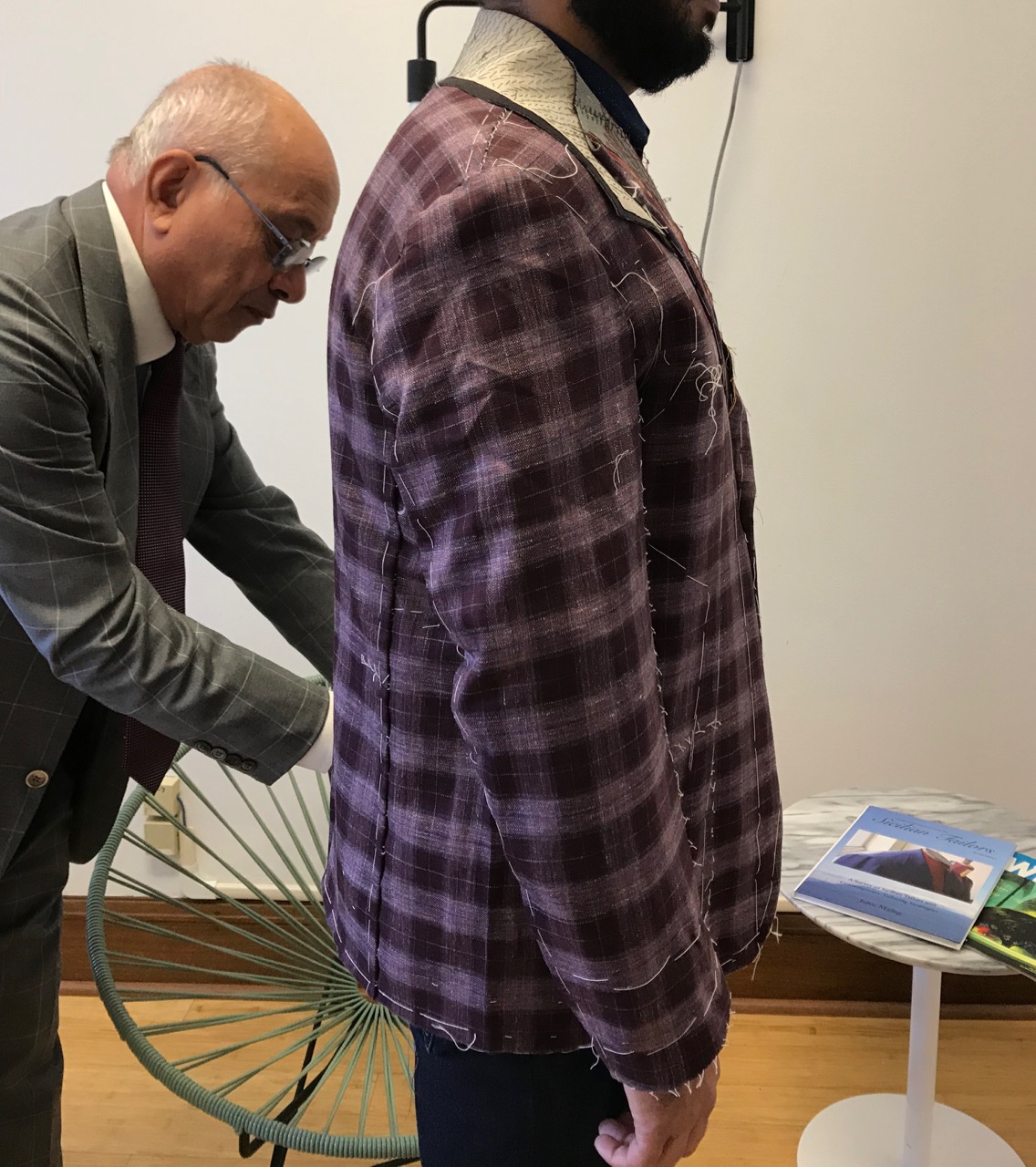
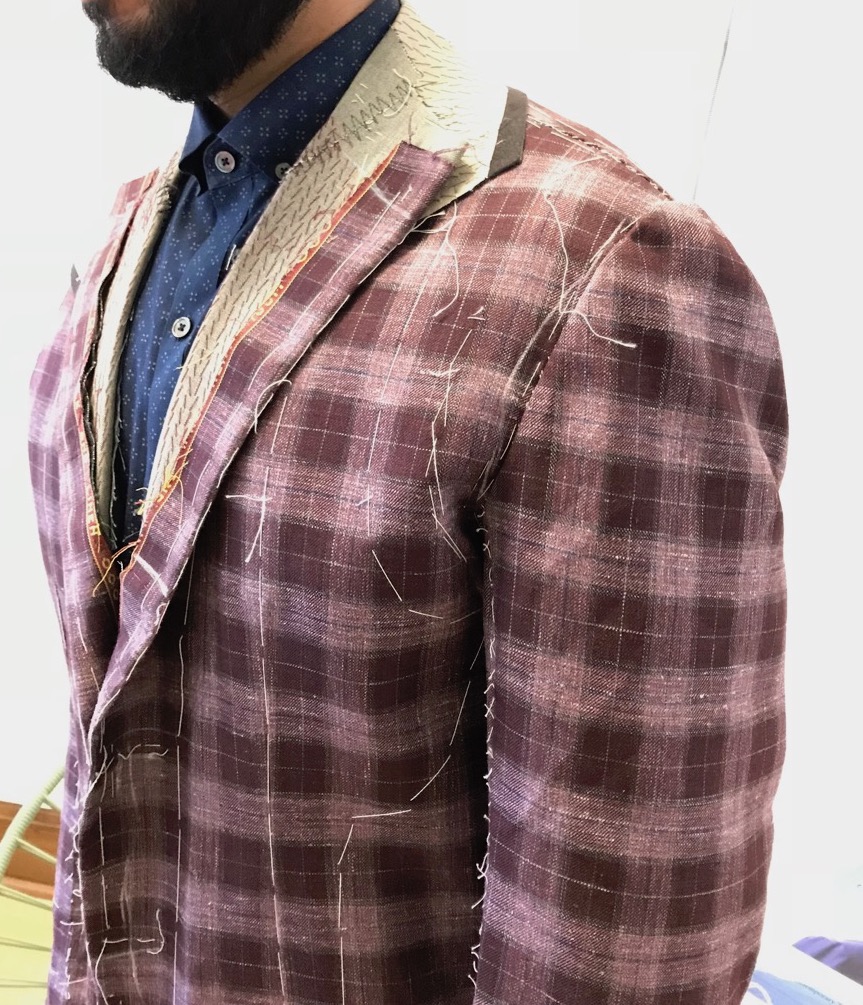

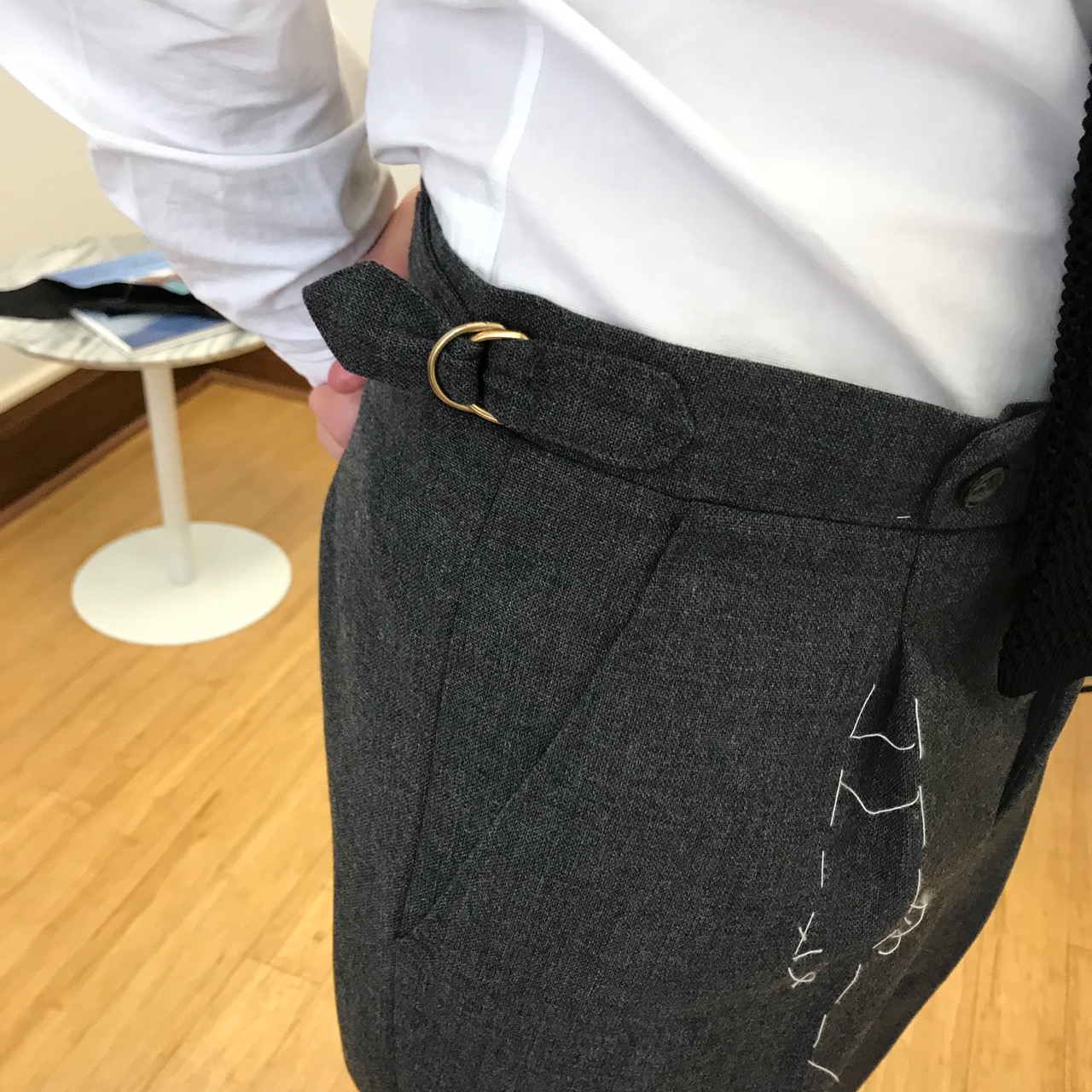
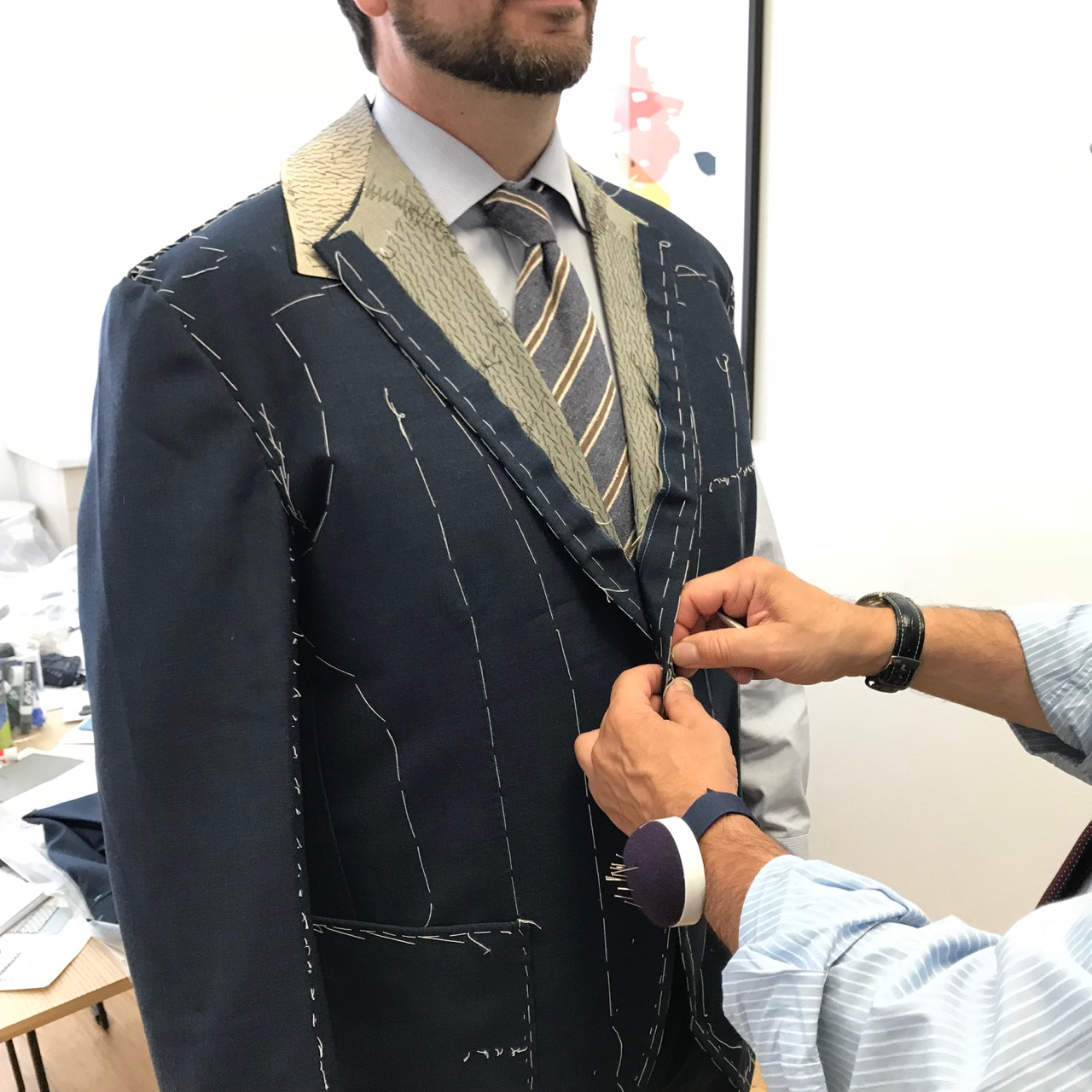
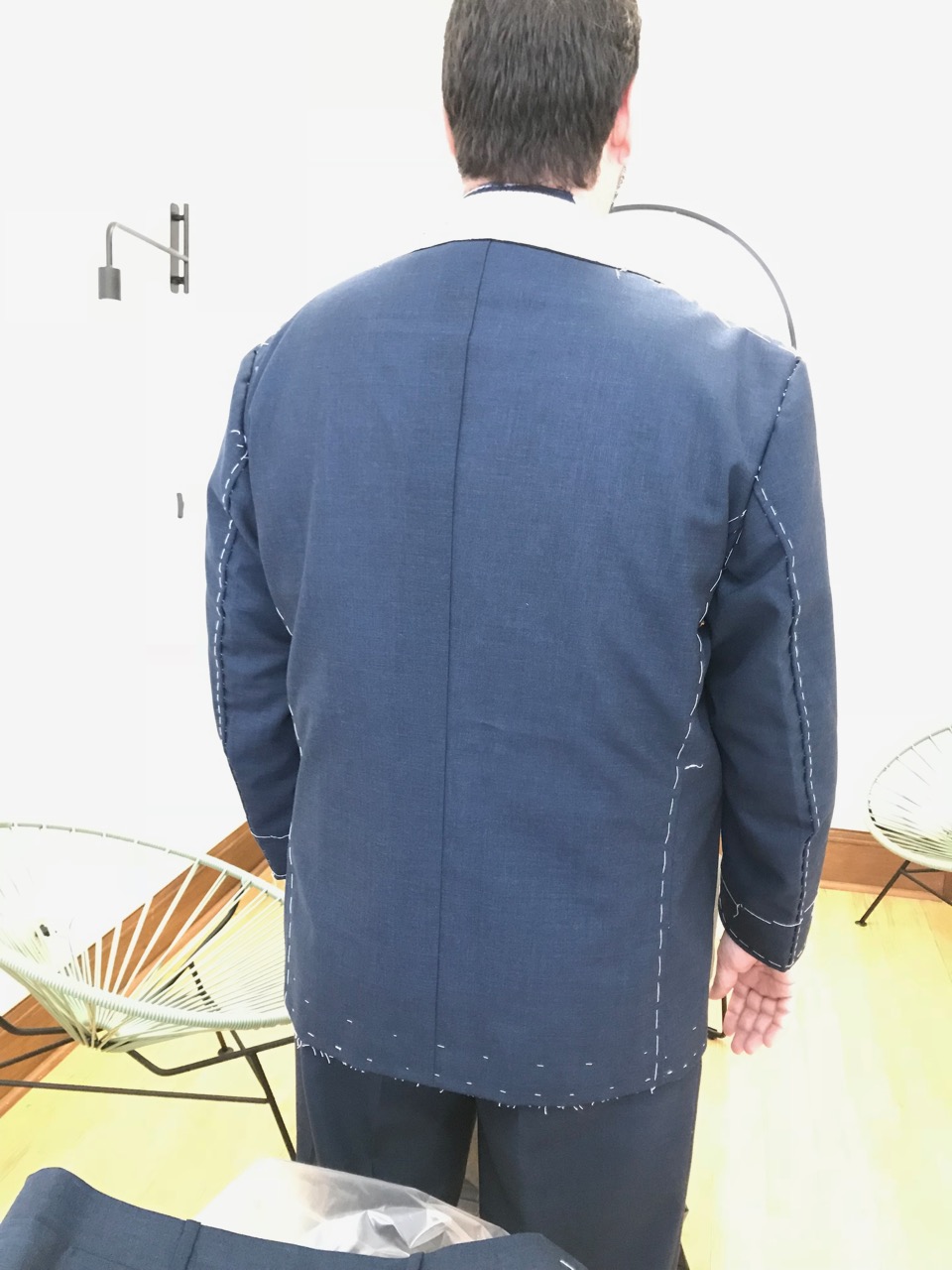
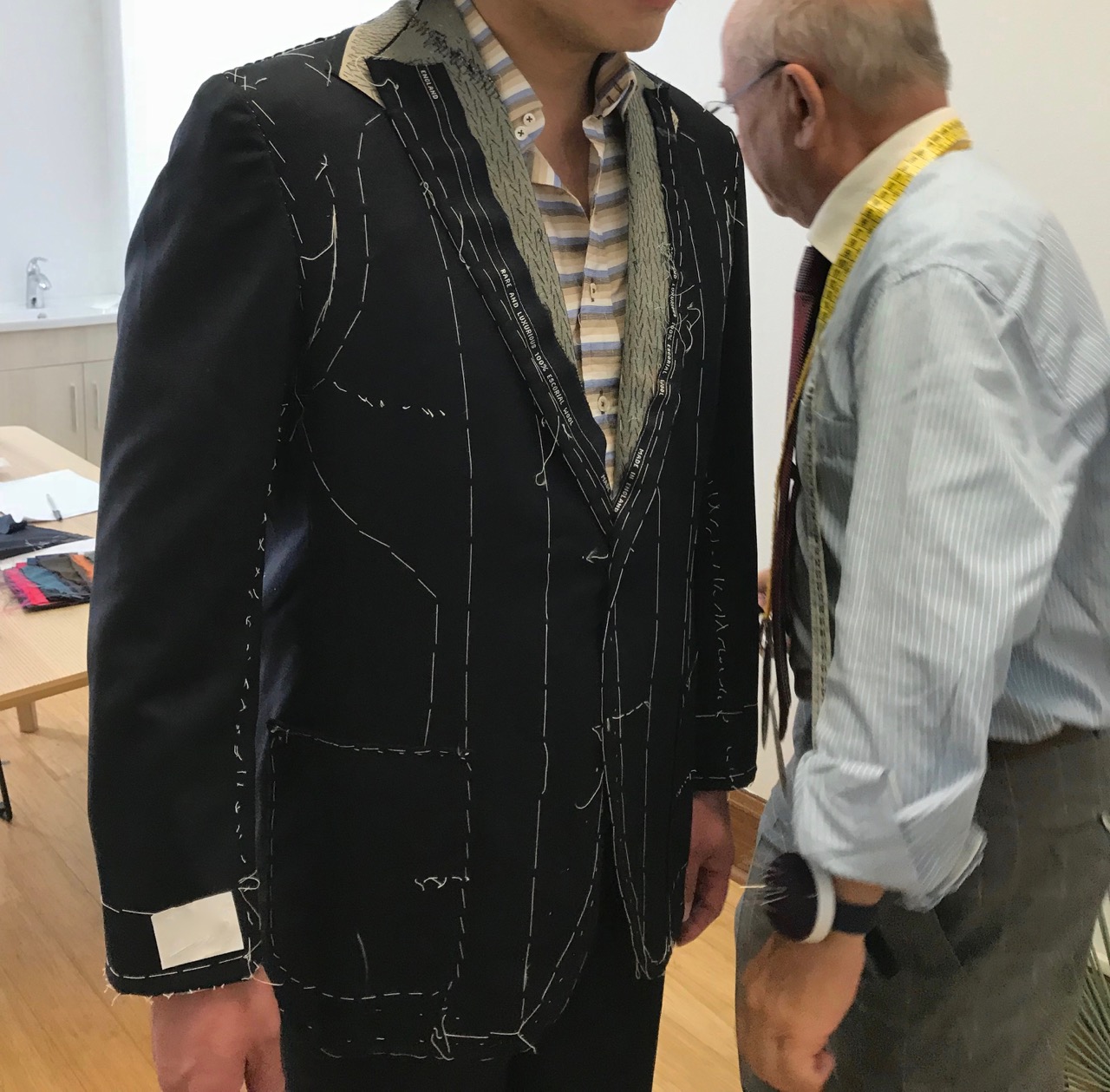
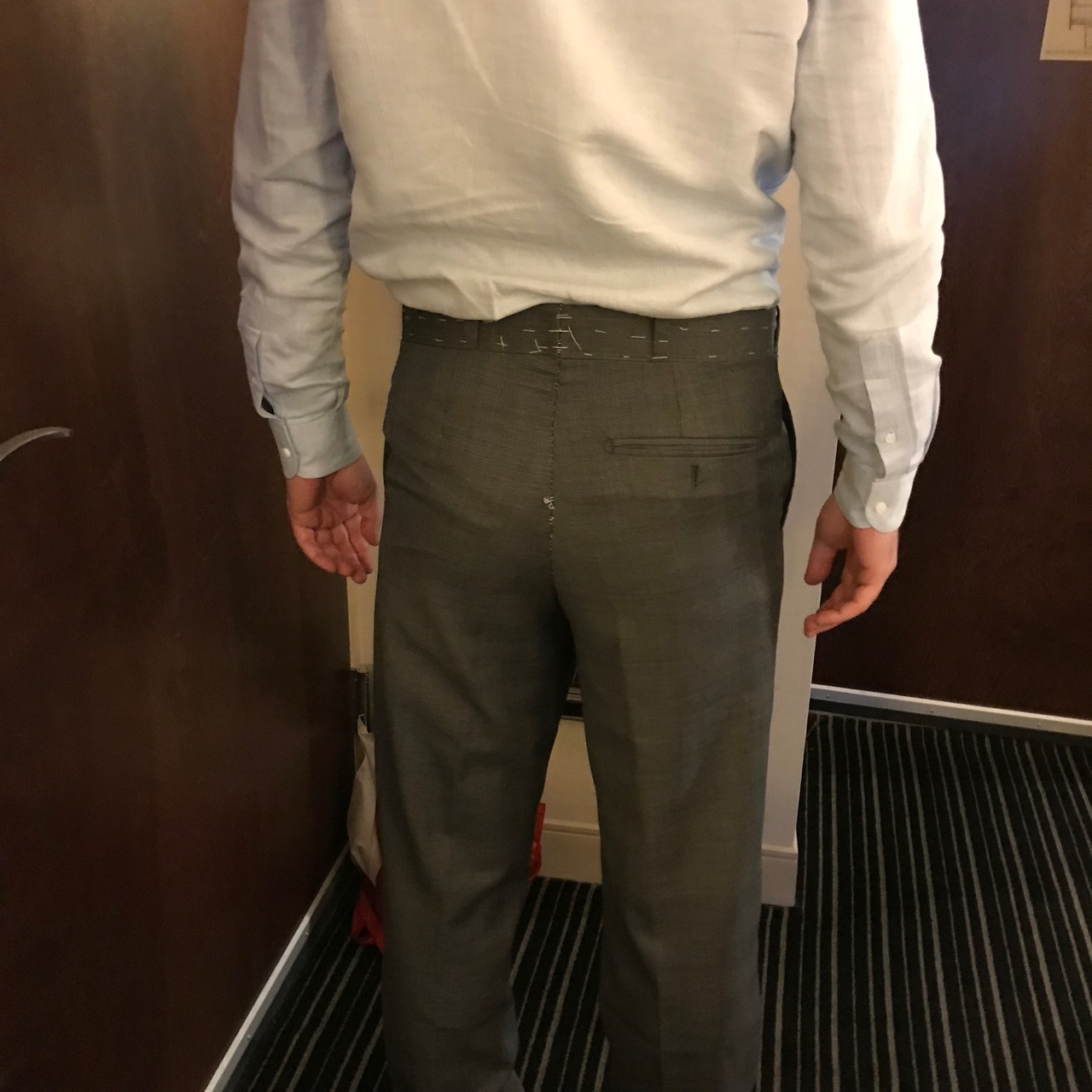
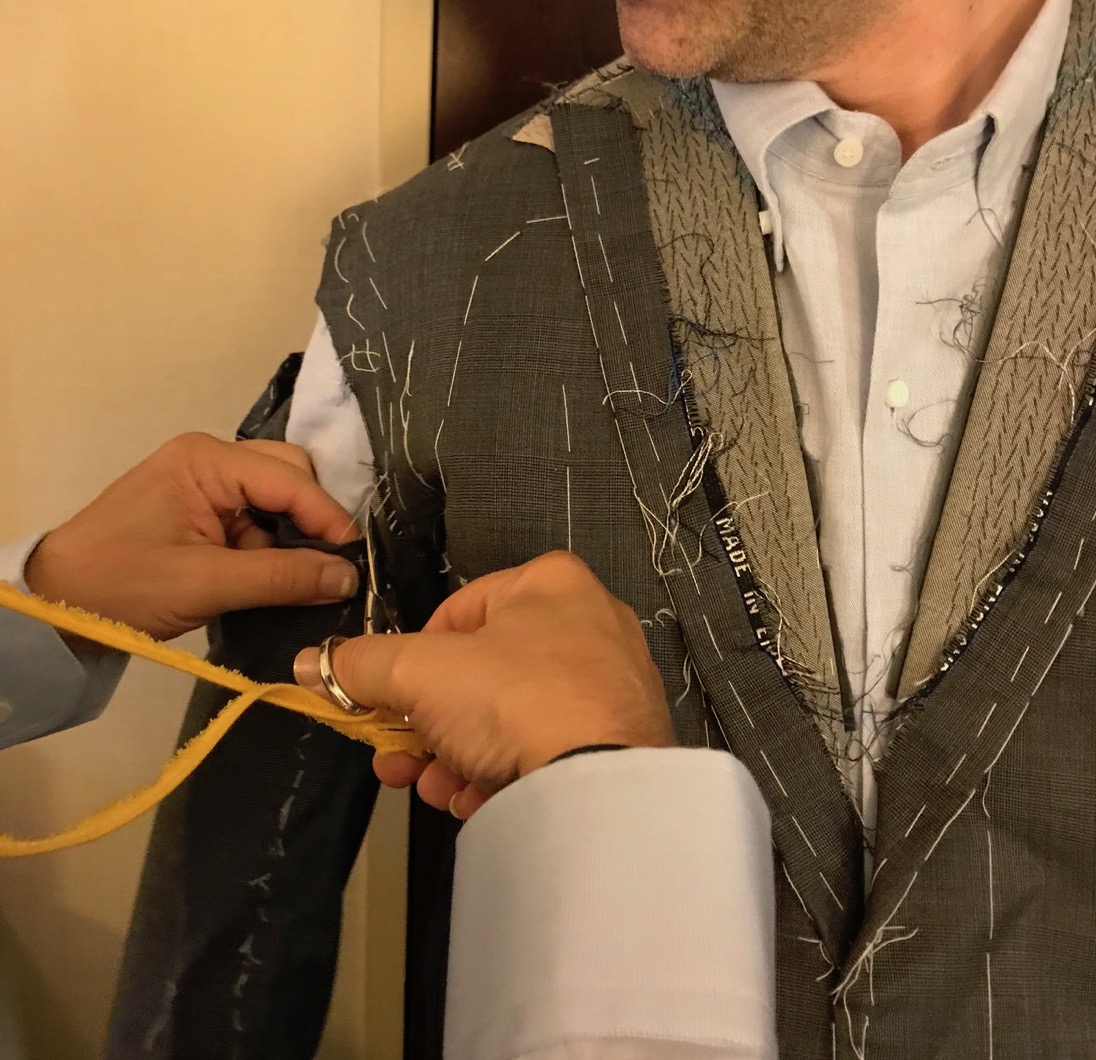
Last but not least, we will discuss lining and button choices that would go well with your commission. We offer bemberg linings and horn, corozo and mother of pearl buttons. The tailor and I will make recommendations on linings and buttons but you are certainly free to make your own choices (or even bring your own linings and buttons).
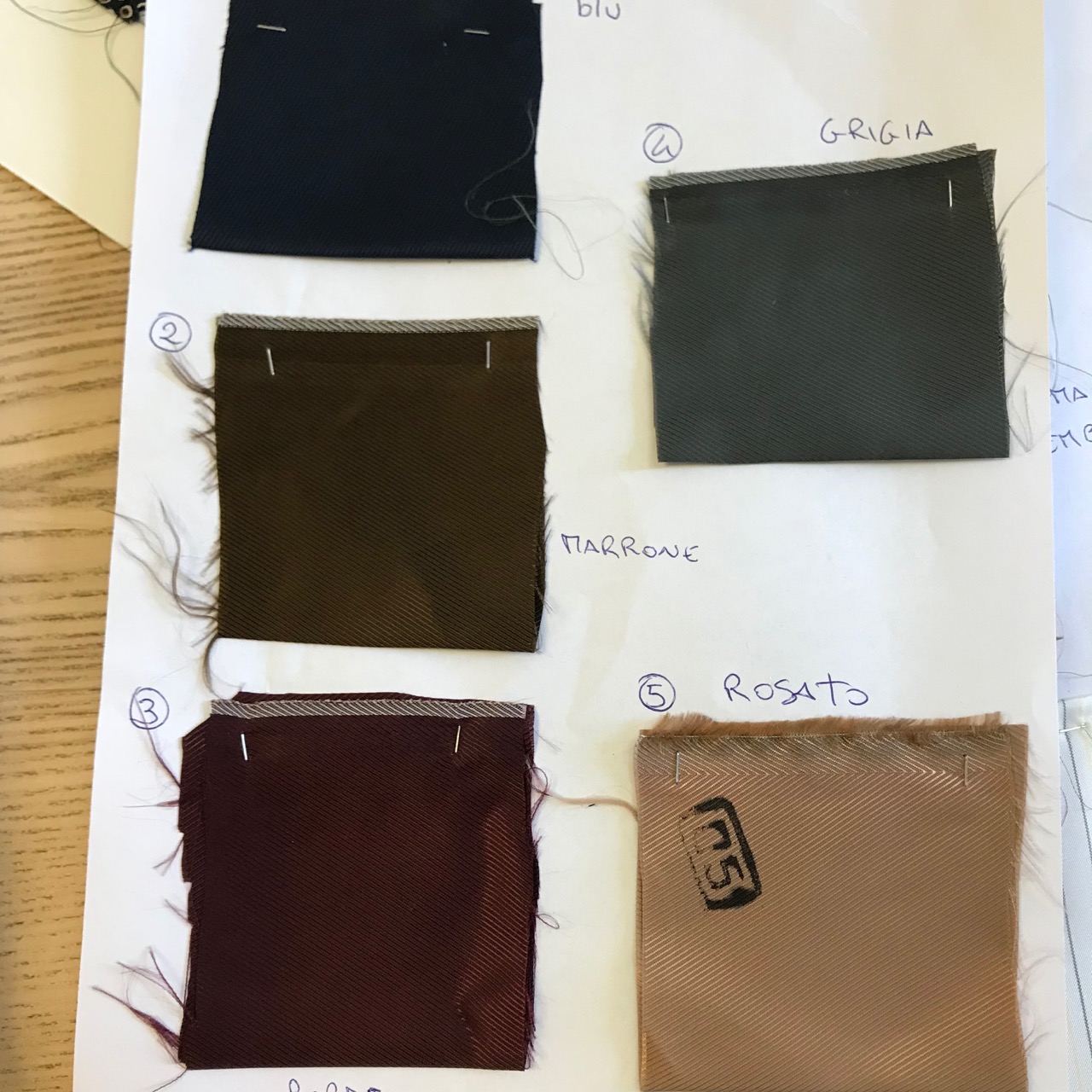

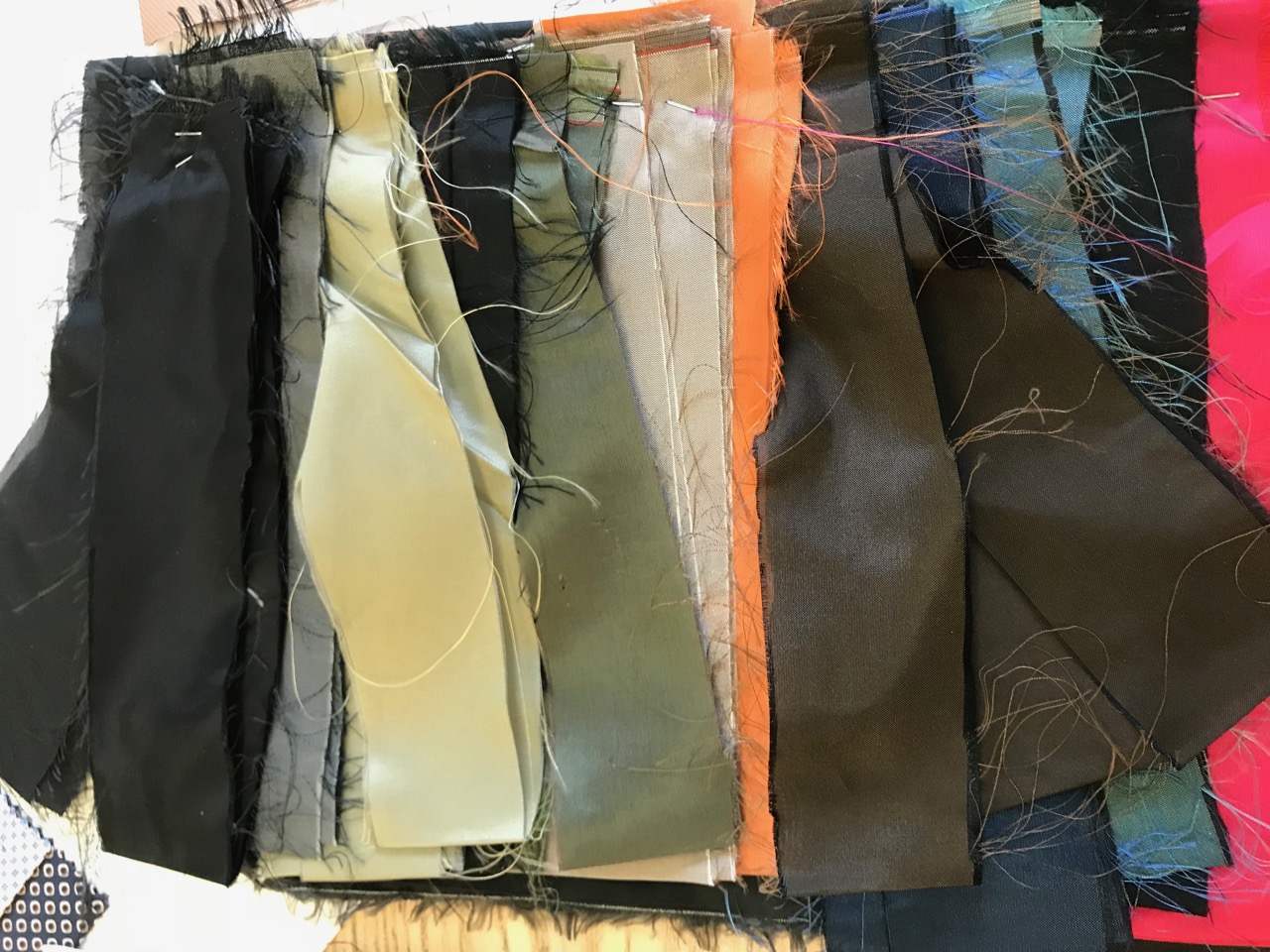
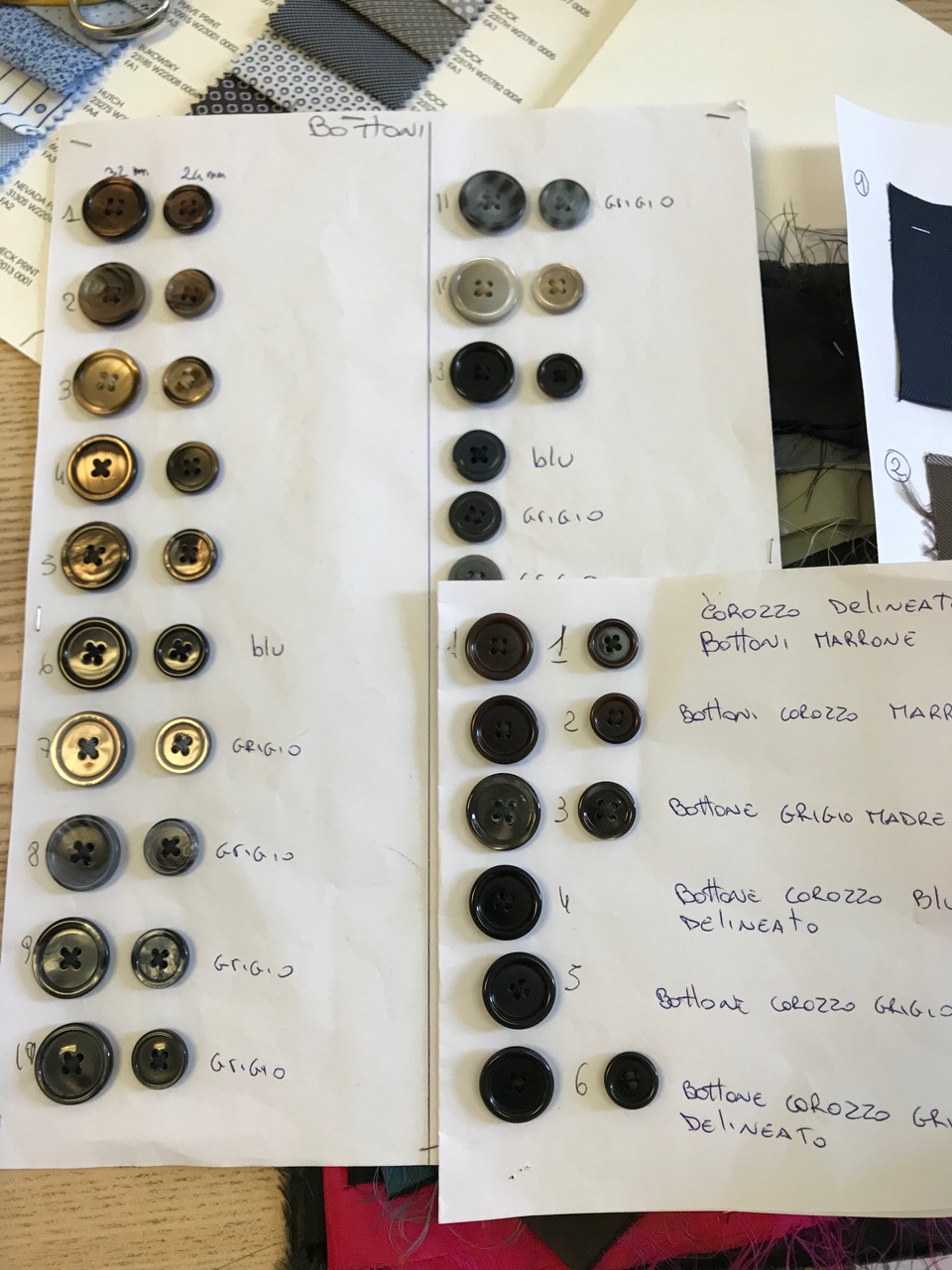
Below is just a sample of cloth selections made by our clients. They reflect thoughtful and informed consideration of the function of the jacket and the desirable characteristics of the fabric.
In our digital age, we are fed a constant diet of Facebook, Instagram, Snapchat and WeChat updates by friends, colleagues and digital influencers with millions of followers.
People share anything and everything online. These days very little in terms of fashion and style is truly new or a secret. Women decide on the next handbag or #ootd by swiping on Instagram. Likewise, men get inspired by what other guys are wearing by browsing #wiwt. Most of this is "free" and easy. Everything is see, click or buy.
Against that backdrop, writing a full-length book could be construed as either retro or out of step with the times.
I chose to write a book on Sicilian tailoring. Why? Because only a long-form narrative can do justice to the topic. My view is this: the deeper the secret, the more that needs to be told.
Sleevehead's Guide to Sicilian Tailors is the first and only guide to unlocking the last secret left in men's bespoke tailoring. That’s quite a statement but I truly believe it.
This is a sartorial story that cannot be told in a single tweet or Instagram, or even a hundred of them. Sicilian tailors have a tremendous story but no one has been willing to tell it. I remember thinking how shocked I was that tailors so skilled could be so unknown. So I decided to tell their story.
Sicilian tailors offer tremendous value (thanks to their relative obscurity) and possess their own unique approach which I instinctively saw and have elucidated more crisply in the new edition of #SGST.
After more than six years of traveling, researching and personally commissioning bespoke clothes in Sicily, I sum up what I know and love most about Sicilian tailors and their Mediterranean stance to cutting and making superbly tailored clothes.
If you are truly serious about bespoke tailoring and masculine style, this is a secret you cannot miss out on.
For those who are new to Sicilian tailors or bespoke tailoring, you may be wondering how flexible our tailor is and the kinds of features you can specify for your bespoke commission. That's a great question.
The tailor we’re working with can make clothes for a variety of body types and can accommodate a wide range of style choices. His clients run the gamut from children to adults. He has dressed men and women from across a variety of professions from business and academia to opera and the arts.
In terms of shape and silhouette, he has done quite a bit of stage/theatrical costume work so if you want retro, eccentric and unusual he can do so without batting an eye. Even more so if you want classic and conservative style.
You might have experienced or read that many tailors have a preferred house style that they are reluctant to deviate from. A house style might typically have a fixed jacket length for a specific height, open or closed fronts, a specific amount of waist suppression, a high or low button stance, a high or low gorge height and a specific lapel width.
If you’re unsure, our tailor will certainly make suggestions for your commission. But you are not constrained by them, especially if you have a clear idea of your commission or are experienced with bespoke. When I was looking for the right tailor to work with, flexibility was one of my top criteria and it's a key reason why I chose this tailor.
I came to this conclusion after spending hours talking to him and his coworkers in his workshop and viewing multiple examples of his finished work and those in progress. Based on what I saw, the tailor is fully capable of executing your choices technically and attitudinally.
For example, I went with a shorter length on the sample jacket than I normally wear even though the tailor suggested a slightly longer one. I also wanted fairly open jacket fronts. For the sample pants, I let him make his default style which tends to be slim and lower rise.
In addition, I had the opportunity to meet and chat with a local client during one of his fittings. This particular client had very specific and unconventional requirements for his evening velvet jacket. Moreover, he was challenging to fit properly because of his forward abdomen and swayback. But based on what I heard from the client, the tailor accommodated both client preferences and fit without any issues technically and attitudinally.

In sum, you will have flexibility, if you choose to exercise it, in a number of areas.
For jackets these include (but are not limited to):
For pants these include (but are not limited to):
In my view, Sicilian tailoring constitutes a third school of bespoke tailoring distinct from the two other well-known options - Savile Row and Naples. In a nutshell, Savile Row embodies sobriety and discretion in a jacket while Naples embodies exuberance (i.e. less structure). As a matter of attitude, Sicilian tailoring is more reserved than Naples but “smiles” a bit more than London. The result is a subtly different shape and silhouette of the Sicilian jacket and pants compared to their more familiar counterparts.
What accounts for these subtle nuances? Every single Sicilian tailor I have met is rooted in a specific place. Place grounds and integrates the tailor and his workshop. Place becomes inseparable from craft. This convergence of place and craft also helps paints a clear picture of what you’re wearing and why.
I think this authenticity is appealing to a certain type of person.
Because they are very localized and less known, Sicilian tailors also create a rarer product than London and Naples in terms of production output. The difference is an order of magnitude or more - hundreds as opposed to tens of thousands of suits per year.
Sicilian Reserve is trying to do something truly different from the bespoke norm. We are trying to offer affordability, preserve rarity and ensure continuity as long as it remains possible.
MTM is essentially off-the-rack with additional flexibility to personalize a number of features such as cloth, lining or lapel width.
Thanks to the renaissance in menswear in the last five years, dozens of new brands have emerged offering “custom” shirts, jackets and suits in North America and Europe. From an affordability perspective, this is a good thing. These MTM brands can offer great value by sourcing from very efficient, usually overseas factories to keep prices down. MTM can provide a decent fit assuming your build and figure closely matches one of their fit models (Each fit model is based on an idealized person’s measurement).
But let’s be clear - this is not true bespoke. No one is actually converting your specific measurements and posture into a personalized pattern and transferring that pattern to cloth to create a finished garment from scratch. With bespoke, a tailor takes your measurements and transforms your cloth into a garment shaped for you. With MTM, this 1:1:1 correspondence breaks down.
With RTW or MTM, the goal is economies of scale. Think factory, not workshop. For instance, one successful menswear brand recently produced 50,000 MTM pieces in just one month. Even a luxury menswear brand like Kiton, which limits annual production of outerwear to 20,000 garments, must resort to industrial production methods. Today’s MTM, whether affordable or luxury, loses the vital, personal correspondence of you + tailor + cloth.
In the not too distant future, we can expect automation to further disrupt MTM and bespoke tailoring. Tailor-bots will be trained on thousands or millions of human measurements to spit out patterns. Sew-bots will automate the sewing and construction of garments. Even with this intelligent automation, I believe tomorrow’s tailor-bots and sew-bots will still lack what only a human tailor’s holistic experience can provide. But that’s another discussion entirely.
We require the following minimum cloth lengths based on your height and chest size up to US mens size 42. Of course, it's always better to provide more cloth than the minimum. Minimum cloth lengths require a standard 59-62 inch (150 - 157 cm) cloth width. Please check your cloth width and length before ordering.
A few other important notes:
For garments, heights, cloth widths or chest sizes not listed here, please consult with us first before purchasing your cloth.
Height up to 5’7” and chest size up to US size 42
Height up to 5’11” and chest size up to US size 42
Our lengths are usually less than the generic numbers cited on the web or by other cloth merchants or tailors (e.g. 2.5m for a jacket or 3.5m for a suit). Generic cloth lengths are intended to cover nearly all possible body types and therefore include excess margin not needed by our tailor (or most Sicilian tailors for that matter).
We will provide lining for your commission and will tend to match lining color with the base or dominant color of your cloth but you will have a range of color options for lining and buttons.
If you wish to provide your own lining material and buttons, please include those at the same time you give us your cloth. Below are typical lengths for lining but please contact us to confirm: